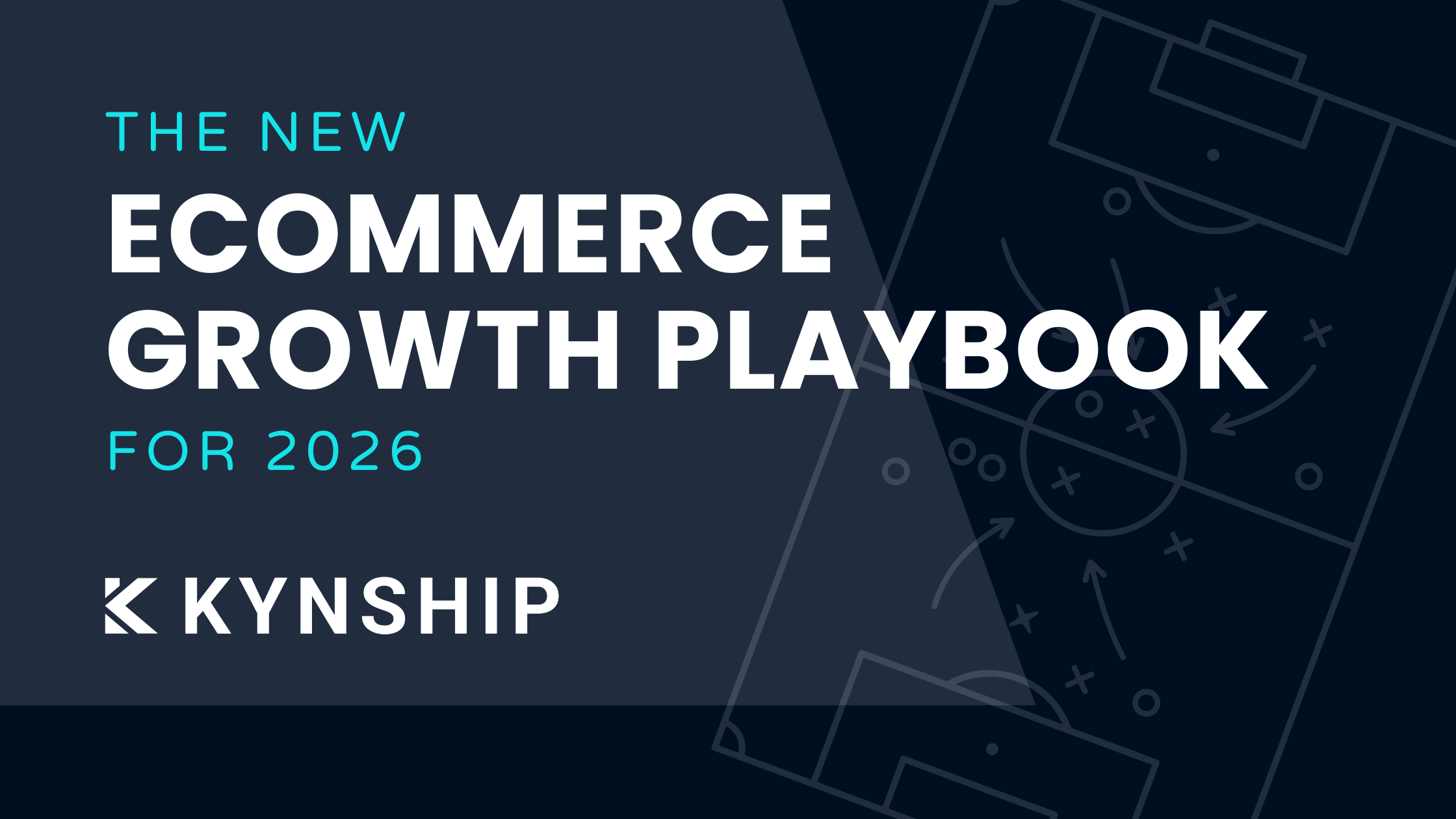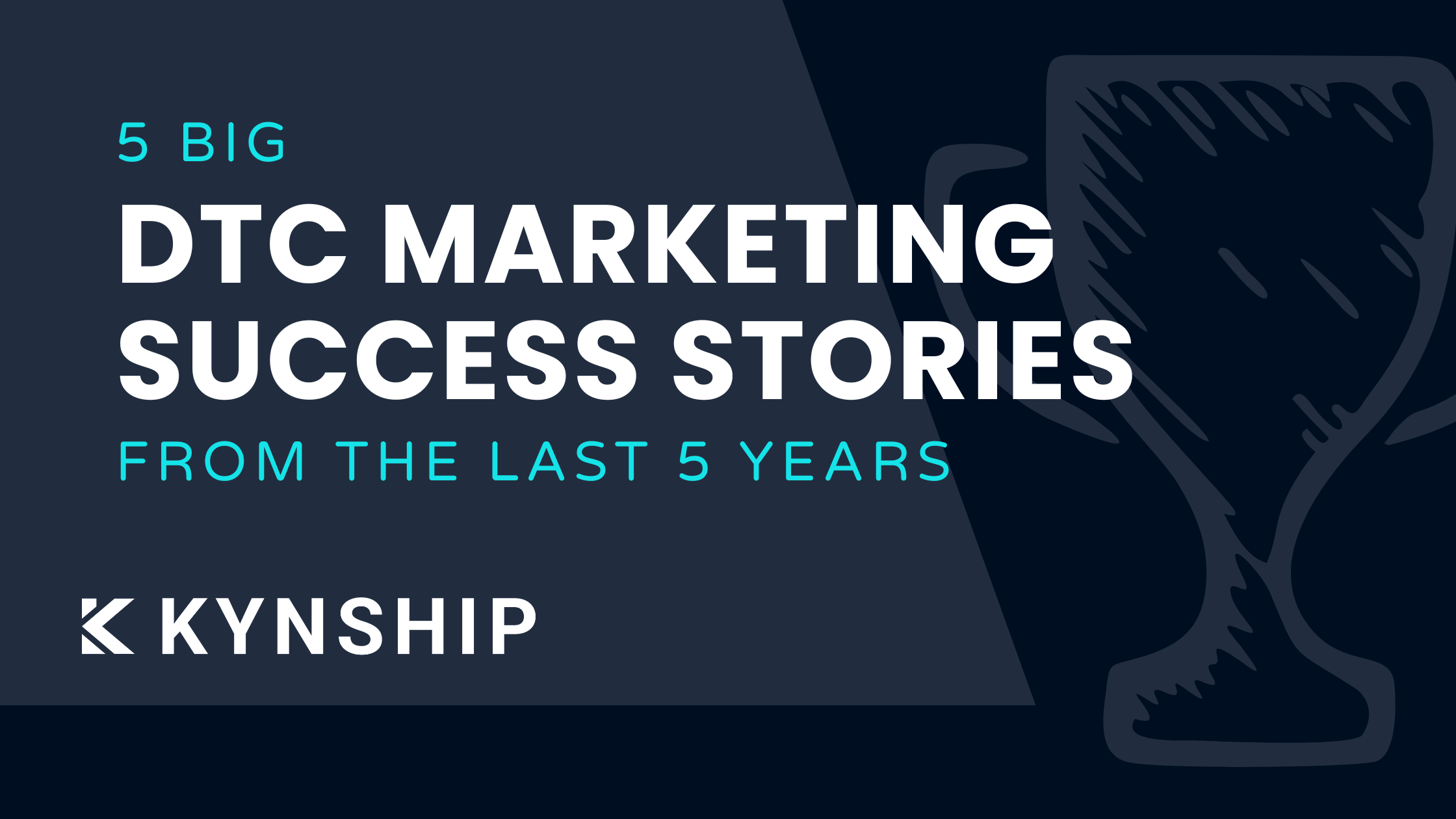How We Approach Creative Reporting at Kynship: Steal These 10 Segments From Our Playbook

Creative reporting is the art and science of understanding why your best-performing ads work so well.
Why should you care about creative reporting? Because understanding the ‘why’ behind your top ads will help you replicate success and craft a more sustainable creative strategy. You can use the insights from these creative reports to guide your next set of creatives — whether that’s UGC, IGC, or branded content.
This article is a first-hand look at our very own playbook for creative reporting. Use it as a reference to understand which metrics matter the most and create your own creative reports.
How Do You Define “Best-Performing” Ads?
To understand what we define as “best-performing” ads, you first have to know that we use cost control campaigns at Kynship. Why? Because we want to keep efficiency front and center. This means Meta’s algorithm increases ad spend for creatives which are performing well and decreases it for creatives which aren’t quite resonating with the audience.
So, the best-performing ads are the ones that get the most spend in our cost control campaigns. When an ad gets more money via Meta in cost control campaigns, that signifies it’s doing well according to our cost targets. Meta believes these ads can help us acquire customers at a profitable rate.
But once you get your list of top-performing ads, how do you analyze them? How do you pick out the elements from it that are working well and double down on it?
How We Approach Creative Reporting at Kynship Using 10 Segments
At Kynship, we use Kitchn to share all our creative reports with clients. Everyone has access to the dashboard to view the top-performing ads within a date range. We also go through this creative report together bi-weekly. We’ve found that once every two weeks is the perfect amount of time to gain new insights. Any more would be ineffective and lead to unrealistic expectations; any less, we wouldn’t be able to optimize for success in a timely manner.
All our creative reports rely on the AIDA metrics. AIDA stands for Attention, Interest, Desire, and Action. Why AIDA? In our experience of analyzing over $350M in ad spend, these metrics have the highest correlation to an increase in ROAS. AIDA literally models the behavior you want consumers to take before they make a purchase via any ad:
- First, you want to capture their attention
- Then, you aim to hold their interest in what you’re saying
- After that, your goal is to create a desire to click on your website to learn more
- Finally, you want potential buyers to take action by purchasing one of your products
Which metrics fit into the AIDA model on our Kitchn dashboard? Here’s a list:
⚡ Note: We share these metrics for the top 5–10 top-performing ads within a date range. The typical timeline is month-to-date (MTD).
1: PECS (the default metrics)
These are the metrics that we share for each and every client. They are readily available. You might be tracking these already:
- Performance — includes things like reach, impressions, delivery
- Engagement — includes metrics like post saves, page engagement, video views
- Conversions — includes stuff like how many people added your product to the cart, added their payment info, donated
- Settings — includes the objective of the ad, ad set budget, campaign budget
We don’t just throw these metrics in the air without context, though. All of them might not have equal weight. We know what our clients care about and what their priorities are — we adjust accordingly.
For example, if we know you care more about impressions than any other performance metric, we’ll dive deeper into those numbers in our creative reporting. We’ll analyze why the impressions of an ad are through the roof and how we can mirror that in future creatives, for instance.
2: Ad name
The ad name highlights the angle and creative type. For example, let’s say you sell edible mental health products that can be marketed for better sleep or stress management.
If the ad is a video of an influencer unboxing your product with the sleep angle, the ad name would be, “[Influencer Name] unboxing video sleep focused.”
Having clear ad names with all the crucial info right at the top will help in quickly gauging what the ad is about and spot patterns more easily.
For example, if six of the ten top performing ads have the “sleep-focused” angle despite being different creative types, you can instantly know that the sleep-focused marketing is getting you better results than the stress-management angle.
3: Spend
This is the spend dedicated to your top-performing ads. Tracking day-over-day spend is overrated. The tiny fluctuations might not give you any useful insights to work on.
What’s the most crucial is month-over-month (and week-over-week is also relatively important).
For example, if a top-performing ad consistently outperforms every other ad for the past two months, you know something’s hitting right with that ad. You can analyze it thoroughly and replicate elements from it in your new set of creatives.
4: Website URL (offer)
The website URL is the messaging on your ad on the final link.

You want this to be compelling enough to click, be in alignment with the ad copy, and indicate the right offer to the end user. Examine if you need to change it or test new phrasing to be more consistent with your offer.
5: Screenshot (GIF)
This is what your ad is communicating at first glance. Imagine a potential customer scrolling on their feed and coming across your ad — are they getting the right idea about your product and brand? Are they immediately able to understand who you are and what you sell? Think of this metric as the 10,000 feet impression of your ad.
6: Preview shareable link
Monitor how your ad looks on various screens. Is the ad copy challenging to read on mobile? Look for weird formatting and legibility concerns. You want your ad to display clearly across all kinds of devices.
7: Thumbstop ration (attention)
The thumbstop ratio is the “attention” arm of AIDA. It’s calculated by measuring three second views/impressions. Use the thumbstop ratio to examine how effective your hook is in stopping the scroll.
At Kynship, our benchmark thumbstop ratio is 25%. If you’re hovering in less than 20%, your hooks need to change. It doesn’t matter how great your creative is if your thumbstop ratio is off. You need potential customers to stop and view your ad before you can think about anything else.
8: Sustain rate (interest)
The sustain rate is the number of people who got to the 25% in your video and continued watching till the 95% point. Sustain rate shows whether your offer is interesting enough. Are you able to convince your potential buyers of the benefits of your product?
We benchmark for an 88% sustain rate at Kynship. If you aren’t coming near this rate, you need to reframe your messaging and offer.
9: Click-through rate (desire)
This is the percentage of people who watched your ad and were tempted to check out more. They clicked on the URL and visited your landing page. Our benchmark CTR is 1%. Many clients of ours have top-performing ads that hit double that benchmark — understanding why helps us clone those results.
10: Subjective analysis
The thing with creative reporting is…it’s not all science. There are subjective nuances beyond the data-driven metrics. You also need to do a qualitative assessment to figure out what’s working best for your brand.
We try to understand why a creative is performing well. Is it the angle that’s resonating with buyers? Or is it the persona it speaks to aligning well? We look at the hook, angle, creative type, persona, and offer to do creative reporting beyond numbers.
For example, one of our clients sells hats. In analyzing their top-performing ads, we found two commonalities:
- Many of the top-performing ads have a person using the hat
- Other best-performing ads highlighted the unique colors of their products — like purple or orange
We combined these insights with tangible metrics. For instance, we found that ads with unique hat colors had an excellent sustain rate but didn’t have a high conversion rate.
Conclusion: Something about the colors does make users stop their scroll, but it doesn’t compel them to buy those items.
When we share this with the client, they might replicate the format for their upcoming creative iterations — like branded content or UGC partnerships. These insights will help them build more creatives that have a higher chance of performing well.
The above example shows how the concrete metrics and the subjective analysis work together to inform a cohesive creative reporting strategy at Kynship.
Use Creative Reporting Insights to Scale What’s Working
The ultimate goal of creative reporting is to find out what works well and what doesn’t. Once you know what resonates with your target audience, you can scale it. Use those insights for future creative production.
Creating high-performing creatives doesn’t have to be a process of throwing stuff on the wall and seeing what sticks. You can nail down the specifics of a high-performing ad if you know how to do creative reporting right.


5 DTC Marketing Success Stories From The Last 5 Years
Five real DTC marketing success stories from the last five years, breaking down how brands scaled despite rising CAC, creative fatigue, and tougher competition, plus key lessons you can apply today.

The New Ecommerce Growth Playbook For 2026
These are the ecommerce growth marketing strategies we are using right now to successfully scale DTC brands from $2M to $50M.
Bi-weekly tips to reduce your CAC
Join thousands of DTC operators and subscribe to Cut the CAC for insights from the Bottom Line Podcast and Kynship's growth strategies.


.avif)
.avif)
.avif)



